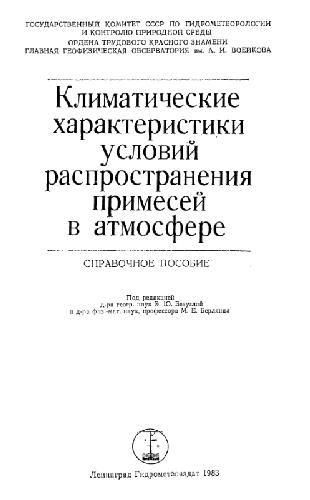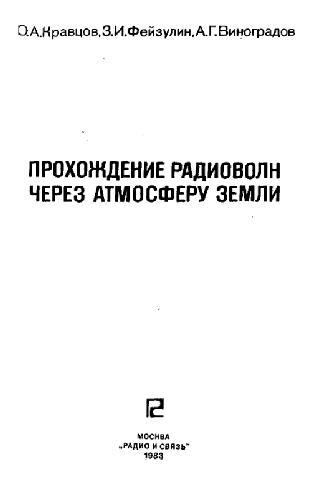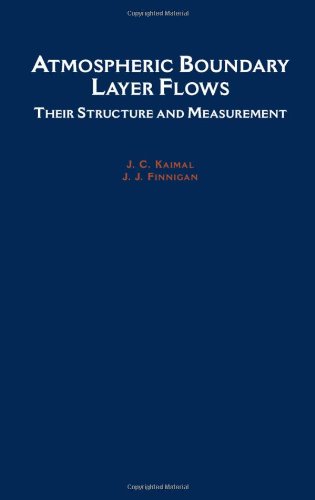Mark Z. Jacobson052183970X, 9780521839709
Table of contents :
Cover……Page 1
Half-title……Page 3
Title……Page 5
Copyright……Page 6
Dedication……Page 7
Contents……Page 9
Preface……Page 15
Acknowledgments……Page 16
1.1 Brief history of meteorological sciences……Page 17
1.2 Brief history of air-pollution science……Page 21
1.4 Weather, climate, and air pollution……Page 22
1.6 Atmospheric processes……Page 24
2.1 Pressure, density, and composition……Page 28
2.1.1 Fixed gases……Page 30
2.1.1.3 Argon and others……Page 31
2.1.2.2 Carbon dioxide……Page 32
2.1.2.3 Methane……Page 33
2.2 Temperature structure……Page 34
2.2.1.1 Specific heat……Page 35
2.2.1.2 Conduction……Page 36
2.2.1.4 Mechanical turbulence and forced convection……Page 37
2.2.1.6 Advection and other factors……Page 38
2.2.1.7 Boundary-Layer characteristics……Page 39
2.2.2.1 Troposphere……Page 40
2.2.2.2 Stratosphere……Page 42
2.3 Equation of state……Page 44
2.4 Changes of pressure with altitude……Page 50
2.5.1 Types of energy……Page 53
2.5.2 Latent heat……Page 54
2.5.3 Clausius–Clapeyron equation……Page 56
2.5.4 Condensation and deposition……Page 59
2.6 First law of thermodynamics……Page 63
2.6.1 Applications of the first law of thermodynamics……Page 65
2.6.2.1 Determining stability from the dry adiabatic lapse rate……Page 69
2.6.2.2 Determining stability from potential virtual temperature……Page 71
2.6.2.3 Determining stability from the Brunt–Väisälä frequency……Page 72
2.7 Summary……Page 73
2.8 Problems……Page 74
2.9 Computer programming practice……Page 76
3.1.1 Wind velocity……Page 77
3.1.2 Time and spatial rates of change……Page 79
3.1.3 Gradient operator……Page 80
3.2 Continuity equations……Page 81
3.3.1 Time and grid volume averaging……Page 84
3.3.3 Gas continuity equation……Page 90
3.3.4 Particle continuity equation……Page 91
3.3.5 Continuity equation for gas, liquid, and solid water……Page 93
3.4 Thermodynamic energy equation……Page 94
3.6 Problems……Page 96
3.7 Computer programming practice……Page 97
4.1.1 Cartesian, spherical, and other coordinate systems……Page 98
4.1.2 Conversion from Cartesian to spherical coordinates……Page 100
4.2 Newton’s second law of motion……Page 103
4.2.1 Local acceleration……Page 106
4.2.2 Coriolis force……Page 109
4.2.3 Gravitational force……Page 111
4.2.4 Pressure-gradient force……Page 115
4.2.5 Viscous force……Page 117
4.2.6 Turbulent-flux divergence……Page 121
4.2.7 Complete momentum equation……Page 124
4.3 Applications of the momentum equation……Page 127
4.3.1 Geostrophic wind……Page 128
4.3.2 Surface-layer winds……Page 129
4.3.3 The gradient wind……Page 130
4.3.4 Surface winds around highs and lows……Page 133
4.3.5 Atmospheric waves……Page 134
4.3.5.1 Pure acoustic waves……Page 138
4.3.5.2 Gravity, acoustic-gravity, and Lamb waves……Page 140
4.3.5.3 Inertia gravity waves and inertia Lamb waves……Page 143
4.3.5.4 Rossby waves……Page 147
4.4 Summary……Page 151
4.5 Problems……Page 152
4.6 Computer programming practice……Page 153
5.1 Hydrostatic and nonhydrostatic models……Page 154
5.1.3 Anelastic nonhydrostatic model……Page 156
5.1.4 Boussinesq approximation……Page 158
5.3 Pressure coordinate……Page 159
5.3.1 Gradient conversion from altitude to pressure coordinate……Page 160
5.3.2 Continuity equation for air in the pressure coordinate……Page 162
5.3.3 Total derivative in the pressure coordinate……Page 163
5.3.4 Species continuity equation in the pressure coordinate……Page 164
5.3.6 Horizontal momentum equations in the pressure coordinate……Page 165
5.3.8 Geostrophic wind in the pressure coordinate……Page 166
5.4.1 Definitions……Page 167
5.4.2 Gradient conversion from the altitude to the sigma-pressure coordinate……Page 168
5.4.3 Gradient conversion from the pressure to the sigma-pressure coordinate……Page 169
5.4.4.1 Derivation……Page 170
5.4.4.2 Pressure and vertical scalar velocity from the continuity equation for air……Page 172
5.4.5 Species continuity equation in the sigma-pressure coordinate……Page 173
5.4.7 Horizontal momentum equations in the sigma-pressure coordinate……Page 174
5.4.8 Coupling horizontal and vertical momentum equation……Page 175
5.5 Sigma-altitude coordinate……Page 176
5.5.2 Gradient conversion from altitude to sigma-altitude coordinate……Page 177
5.5.3 Continuity equation for air in the sigma-altitude coordinate……Page 178
5.5.4 Species continuity equation in the sigma-altitude coordinate……Page 179
5.5.6 Horizontal momentum equations in the sigma-altitude coordinate……Page 180
5.5.8 Basic equations in spherical-sigma-altitude coordinates……Page 181
5.7 Problems……Page 183
5.8 Computer programming practice……Page 184
6.1 Ordinary and partial differential equations……Page 185
6.2 Operator splitting……Page 186
6.3 Advection–diffusion equations……Page 187
6.4 Finite-difference approximations……Page 188
6.4.1 Consistency, convergence, and stability……Page 189
6.4.2 Low-order approximations of derivatives……Page 191
6.4.3 Arbitrary-order approximations of derivatives……Page 193
6.4.4.1 Courant–Friedrichs–Lewy stability criterion……Page 197
6.4.4.3 Implicit scheme……Page 198
6.4.4.4 Crank–Nicolson scheme……Page 200
6.4.4.5 Leapfrog scheme……Page 201
6.4.4.7 Heun scheme……Page 202
6.4.4.9 Fourth-order Runge–Kutta scheme……Page 203
6.4.5.1 Variable grid spacing and eddy diffusion coefficients……Page 205
6.4.7 The semi-Lagrangian method……Page 207
6.5 Series expansion methods……Page 208
6.5.1 Finite-element method……Page 209
6.5.2 Pseudospectral method……Page 213
6.7 Advection schemes used in air-quality models……Page 215
6.9 Problems……Page 218
6.10 Computer programming practice……Page 219
7.1 Vertical model grid……Page 220
7.2 The continuity equation for air……Page 224
7.3 The species continuity equation……Page 227
7.4 The thermodynamic energy equation……Page 229
7.5 The horizontal momentum equations……Page 230
7.6 The hydrostatic equation……Page 237
7.8 Time-stepping schemes……Page 238
7.10 Problems……Page 240
7.12 Modeling project……Page 241
8.1 Turbulent fluxes of momentum, energy, and moisture……Page 244
8.2 Friction wind speed……Page 246
8.3 Surface roughness lengths……Page 247
8.4 Parameterizations of kinematic turbulent fluxes……Page 251
8.4.1.1 Momentum fluxes……Page 253
8.4.1.2 Energy fluxes……Page 254
8.4.2 Monin–Obukhov similarity theory……Page 255
8.4.2.1 Dimensionless wind shear……Page 256
8.4.2.2 Monin–Obukhov length……Page 257
8.4.2.3 Dimensionless potential temperature gradient……Page 258
8.4.2.4 Noniterative parameterization for momentum and potential temperature scales……Page 259
8.4.2.5 Gradient Richardson number……Page 260
8.4.2.6 Momentum fluxes from similarity theory……Page 261
8.4.2.7 Energy and moisture fluxes from similarity theory……Page 262
8.4.2.8 Vertical profiles of wind speed, potential virtual temperature, and moisture……Page 263
8.5.1 Hybrid scheme……Page 266
8.5.2.1 E-Lambdae schemes……Page 268
8.6.1 Factors affecting soil temperature……Page 270
8.6.2 Ground temperature and moisture over bare soil……Page 271
8.6.3 Temperature and moisture in vegetated soil……Page 275
8.6.4 Road and rooftop surfaces……Page 281
8.6.4.2 Rooftops……Page 282
8.6.4.3 Application……Page 283
8.6.6 Water, sea ice, and snow over sea ice……Page 284
8.8 Problems……Page 287
8.9 Computer programming practice……Page 288
9.1 Energy transfer processes……Page 289
9.2 Electromagnetic spectrum……Page 291
9.3.1 Reflection……Page 299
9.3.2 Refraction……Page 300
9.3.4 Diffraction……Page 302
9.3.5 Particle scattering……Page 303
9.3.6 Gas scattering……Page 305
9.4.1 Gas absorption……Page 306
9.4.1.1 Gas absorption in the solar spectrum……Page 307
9.4.1.2 Gas absorption in the infrared spectrum: the greenhouse effect……Page 308
9.4.1.3 Gas absorption extinction coefficient……Page 310
9.4.1.4 Gas absorption effects on visibility……Page 315
9.4.2 Gas scattering……Page 316
9.4.3 Particle absorption and scattering……Page 317
9.4.3.2 Particle refractive indices……Page 318
9.4.3.3 Absorption and scattering efficiencies……Page 320
9.4.3.4 Optics of particle mixtures……Page 325
9.4.3.5 Modeled aerosol extinction……Page 328
9.5 Visibility……Page 329
9.6 Optical depth……Page 332
9.7 Solar zenith angle……Page 333
9.8 The radiative transfer equation……Page 336
9.8.1 Phase function and asymmetry parameter……Page 337
9.8.2 Incident solar radiation……Page 340
9.8.3 Solutions to the radiative transfer equation……Page 342
9.8.3.1 Analytical solutions……Page 343
9.8.3.2 Numerical solutions……Page 344
9.8.4 Heating rates and photolysis coefficients……Page 348
9.10 Problems……Page 350
9.11 Computer programming practice……Page 351
10.1 Atmospheric gases and their molecular structures……Page 352
10.1.2 Molecular oxygen (O2)……Page 354
10.1.5 Nitric oxide (NO)……Page 355
10.1.7 Ozone (O3)……Page 356
10.1.10 Sulfur dioxide (SO2)……Page 357
10.2 Chemical reactions and photoprocesses……Page 358
10.3 Reaction rates……Page 360
10.4.1 Determining rate coefficients……Page 362
10.4.2 Temperature dependence of reactions……Page 363
10.4.3 Pressure dependence of reactions……Page 365
10.5 Sets of reactions……Page 367
10.6 Stiff systems……Page 369
10.8 Problems……Page 371
10.9 Computer programming practice……Page 372
11.1.1 Photostationary-state relationship……Page 373
11.1.2 Hydroxyl radical……Page 375
11.1.3 Hydroperoxy radical……Page 377
11.1.4 Nighttime nitrogen chemistry……Page 378
11.1.6 Methane production of ozone……Page 379
11.1.7 Ethane and propane production of ozone……Page 381
11.1.8 Formaldehyde and acetaldehyde production of ozone……Page 382
11.1.8.2 Aldehyde reaction with the hydroxyl radical……Page 383
11.1.8.3 Aldehyde reaction with nitrate……Page 384
11.1.10 Sulfur photochemistry……Page 385
11.2 Urban photochemistry……Page 391
11.2.1 Basic characteristics of photochemical smog……Page 392
11.2.2 Meteorological factors affecting smog……Page 393
11.2.3 Emission of photochemical smog precursors……Page 394
11.2.4 Breakdown of ROGs……Page 396
11.2.5 Ozone production from alkanes……Page 397
11.2.6.1 Alkene reaction with the hydroxyl radical……Page 399
11.2.6.2 Alkene reaction with ozone……Page 400
11.2.7 Ozone production from aromatics……Page 402
11.2.8 Ozone production from terpenes……Page 404
11.2.8.1 Terpene reaction with the hydroxyl radical……Page 405
11.2.9 Ozone production from alcohols……Page 406
11.2.10 Condensed mechanisms for organic chemistry……Page 407
11.3 Stratospheric photochemistry……Page 409
11.3.1 Ozone formation from oxygen……Page 410
11.3.2 Effect of nitrogen on the natural ozone layer……Page 412
11.3.3 Effect of hydrogen on the natural ozone layer……Page 413
11.3.5 Chlorine and bromine photochemistry……Page 414
11.3.5.1 Chlorofluorocarbons and related compounds……Page 415
11.3.5.2 Stratospheric breakdown of chlorinated compounds……Page 418
11.3.5.3 Anthropogenic versus natural sources of chlorine……Page 419
11.3.5.4 Catalytic destruction of ozone by chlorine……Page 420
11.3.5.5 Catalytic destruction of ozone by bromine……Page 421
11.3.6 Antarctic ozone hole……Page 423
11.3.6.2 PSC surface reactions……Page 424
11.3.6.3 Reaction probabilities……Page 425
11.3.6.4 Springtime polar chemistry……Page 428
11.3.7 Recovery of stratospheric ozone……Page 430
11.4 Summary……Page 431
11.5 Problems……Page 432
11.6 Computer programming practice……Page 433
12.1 Characteristics of chemical ODEs……Page 434
12.1.2 Properties of ODE solvers……Page 435
12.3 Taylor series solution to ODEs……Page 437
12.4 Forward Euler solution to ODEs……Page 438
12.5 Backward Euler solution to ODEs……Page 440
12.6 Simple exponential and quasi-steady-state solutions to ODEs……Page 442
12.7 Multistep implicit–explicit (MIE) solution to ODEs……Page 443
12.8 Gear’s solution to ODEs……Page 448
12.9 Family solution to ODEs……Page 455
12.11 Problems……Page 458
12.12 Computer programming practice……Page 459
12.13 Modeling project……Page 460
13.1 Introduction to particles……Page 462
13.2 Aerosol, fog, and cloud composition……Page 463
13.3 Discrete size distributions……Page 465
13.4.1 The lognormal distribution……Page 470
13.4.1.1 Obtaining parameters for a lognormal distribution……Page 471
13.4.1.3 Multiple lognormal modes and particle components……Page 473
13.4.2 Marshall–Palmer distribution……Page 475
13.4.3 Modified gamma distribution……Page 477
13.5.1 Full-stationary structure……Page 478
13.5.2 Full-moving structure……Page 479
13.5.3 Quasistationary structure……Page 481
13.5.5 Moving-center structure……Page 482
13.6 Summary……Page 483
13.8 Computer programming practice……Page 484
14.1.1 Sea-spray emission……Page 486
14.1.2 Soil- and fugitive-dust emission……Page 489
14.1.3 Volcanic eruptions……Page 493
14.1.4 Biomass burning and forest fires……Page 494
14.1.6 Fossil-fuel combustion……Page 495
14.1.7 Industrial sources……Page 496
14.1.9 Summary of the emission sources of aerosol particles……Page 497
14.2.1 Homogeneous nucleation rates from classical theory……Page 500
14.2.2 Heterogeneous nucleation rates from classical theory……Page 505
14.2.3 Parameterized homogeneous nucleation rate……Page 507
14.3 Summary……Page 508
14.5 Computer programming practice……Page 509
15.1 Implicit coagulation……Page 510
15.2 Semiimplicit coagulation……Page 512
15.3 Comparison with analytical solutions……Page 514
15.4 Coagulation among multiple particle distributions……Page 516
15.5 Particle flow regimes……Page 521
15.6.1 Brownian diffusion……Page 524
15.6.3 Gravitational collection……Page 526
15.6.4 Turbulent inertial motion and turbulent shear……Page 527
15.6.5 Van der Waals and viscous forces……Page 528
15.6.6 Fractal geometry……Page 530
15.6.7 Diffusiophoresis, thermophoresis, and electric charge……Page 533
15.6.8 Coalescence efficiencies……Page 537
15.7 Summary……Page 538
15.9 Computer programming practice……Page 539
16.1 Fluxes to and from a single drop……Page 541
16.2.1 Corrections to the molecular diffusion coefficient……Page 544
16.2.2 Corrections to the thermal conductivity of air……Page 547
16.2.3.1 Curvature effect……Page 549
16.2.3.2 Solute effect……Page 551
16.2.3.3 Köhler equation……Page 552
16.2.3.4 Radiative cooling effect……Page 554
16.2.3.5 Overall effects……Page 555
16.4 Fluxes to a population of particles……Page 556
16.5.1 Integrated numerical solution……Page 558
16.5.2 Analytical predictor of condensation……Page 560
16.6 Solving homogeneous nucleation with condensation……Page 561
16.7 Effects of condensation on coagulation……Page 563
16.8 ice crystal growth……Page 564
16.10 Problems……Page 566
16.11 Computer programming practice……Page 567
17.1 Definitions……Page 569
17.2 Equilibrium reactions……Page 570
17.2.2 Dissociation reactions……Page 571
17.2.3 Solid precipitation reactions……Page 573
17.3.1 Thermodynamic activities……Page 574
17.3.2 Derivation of the equilibrium relation……Page 575
17.3.3 Temperature dependence of the equilibrium coefficient……Page 577
17.4.1 Dissolution reactions……Page 578
17.4.2 Dissociation and other reactions……Page 579
17.5 Mean binary solute activity coefficients……Page 581
17.6 Temperature dependence of binary solute activity coefficients……Page 583
17.7 Mean mixed solute activity coefficients……Page 584
17.8 The water equation……Page 586
17.9 Solid formation and deliquescence relative humidity……Page 590
17.10 Example equilibrium problem……Page 591
17.11 Mass-flux iteration method……Page 593
17.12.1 Reactions of the form………Page 595
17.12.3 Solid reactions of the form………Page 597
17.13 Equilibrium solver results……Page 598
17.14.1 Solution to dissolution growth for nondissociating species……Page 599
17.14.2 Solution to acid/base dissolution growth……Page 601
17.14.3 Solution to growth in the presence of solid formation……Page 607
17.15 Summary……Page 610
17.17 Computer programming practice……Page 612
18.1.1 Cloud classification……Page 614
18.1.2 Cloud formation……Page 616
18.2.1 Pseudoadiabatic lapse rate……Page 618
18.2.2 Stability criteria……Page 620
18.3 Cloud development by free convection……Page 622
18.4 Entrainment……Page 624
18.5 Vertical momentum equation in a cloud……Page 626
18.7 Cumulus parameterizations……Page 628
18.8.1 Condensation and ice deposition onto aerosol particles……Page 630
18.8.2 Hydrometeor–hydrometeor coagulation……Page 636
18.8.3 Drop breakup……Page 638
18.8.4 Contact freezing……Page 640
18.8.5 Homogeneous and heterogeneous freezing……Page 641
18.8.6 Drop surface temperature and evaporation/sublimation……Page 644
18.8.7 Evaporative freezing……Page 648
18.8.8 Ice crystal melting……Page 649
18.8.9 Aerosol–hydrometeor coagulation: aerosol washout……Page 650
18.8.10 Gas washout……Page 652
18.8.11 Lightning……Page 654
18.9 Summary……Page 658
18.11 Computer programming practice……Page 659
19.1 Significance of aqueous chemical reactions……Page 661
19.2 Mechanisms of converting S(IV) to S(VI)……Page 662
19.2.2 Aqueous-phase oxidation of S(IV)……Page 663
19.3 Diffusion within a drop……Page 668
19.4 Solving growth and aqueous chemical ODEs……Page 670
19.6 Problems……Page 675
19.7 Computer programming practice……Page 676
20.1 Sedimentation……Page 677
20.2 Dry deposition……Page 681
20.3 Dry deposition and sedimentation calculations……Page 686
20.4 Air–Sea Flux of Carbon Dioxide and other Gases……Page 688
20.4.1 Numerical solution to air–sea exchange……Page 689
20.4.2 Simulation of ocean acidification……Page 694
20.7 Computer programming practice……Page 695
21.1.1 Defining the purpose of the model……Page 697
21.1.3 Determining the dimension of the model……Page 698
21.1.5 Selecting variables……Page 701
21.1.6 Selecting a computer architecture……Page 702
21.1.7 Coding the model……Page 703
21.1.8 Optimizing the model……Page 704
21.1.10 Initial conditions……Page 705
21.1.11 Boundary conditions……Page 706
21.1.12 Input data……Page 708
21.1.13 Ambient data……Page 709
21.1.14.1 Interpolating from scattered points to a fixed point……Page 710
21.1.14.2 Interpolating from one coordinate system to another……Page 711
21.1.14.3 Interpolating from fixed points to a random point……Page 712
21.1.15 Statistics and graphics……Page 713
21.1.16 Simulations……Page 715
21.2.1 Model grid……Page 716
21.2.4 Initial conditions……Page 717
21.2.6 Results from baseline simulation……Page 718
21.2.7 Results from sensitivity tests……Page 722
12.5 Computer programming practice……Page 723
A.3 Mass Conversions……Page 725
A.9 Speed Conversions……Page 726
A.10 Constants……Page 727
B.1 Standard atmospheric variables versus altitude……Page 730
B.2 Solar irradiance at the top of the atmosphere……Page 731
B.3 Chemical symbols and structures of gases……Page 732
B.4 Gas-phase reactions……Page 744
B.5 Chemicals involved in equilibrium and aqueous reactions……Page 754
B.6 Thermodynamic Data……Page 756
B.7 Equilibrium reactions and rate coefficients……Page 757
B.8 Irreversible aqueous reactions……Page 759
B.9 Solute activity coefficient data……Page 762
B.10 Water activity data……Page 764
B.11 Surface resistance data……Page 765
B.12 More surface resistance data……Page 767
References……Page 768
Index……Page 800







Reviews
There are no reviews yet.